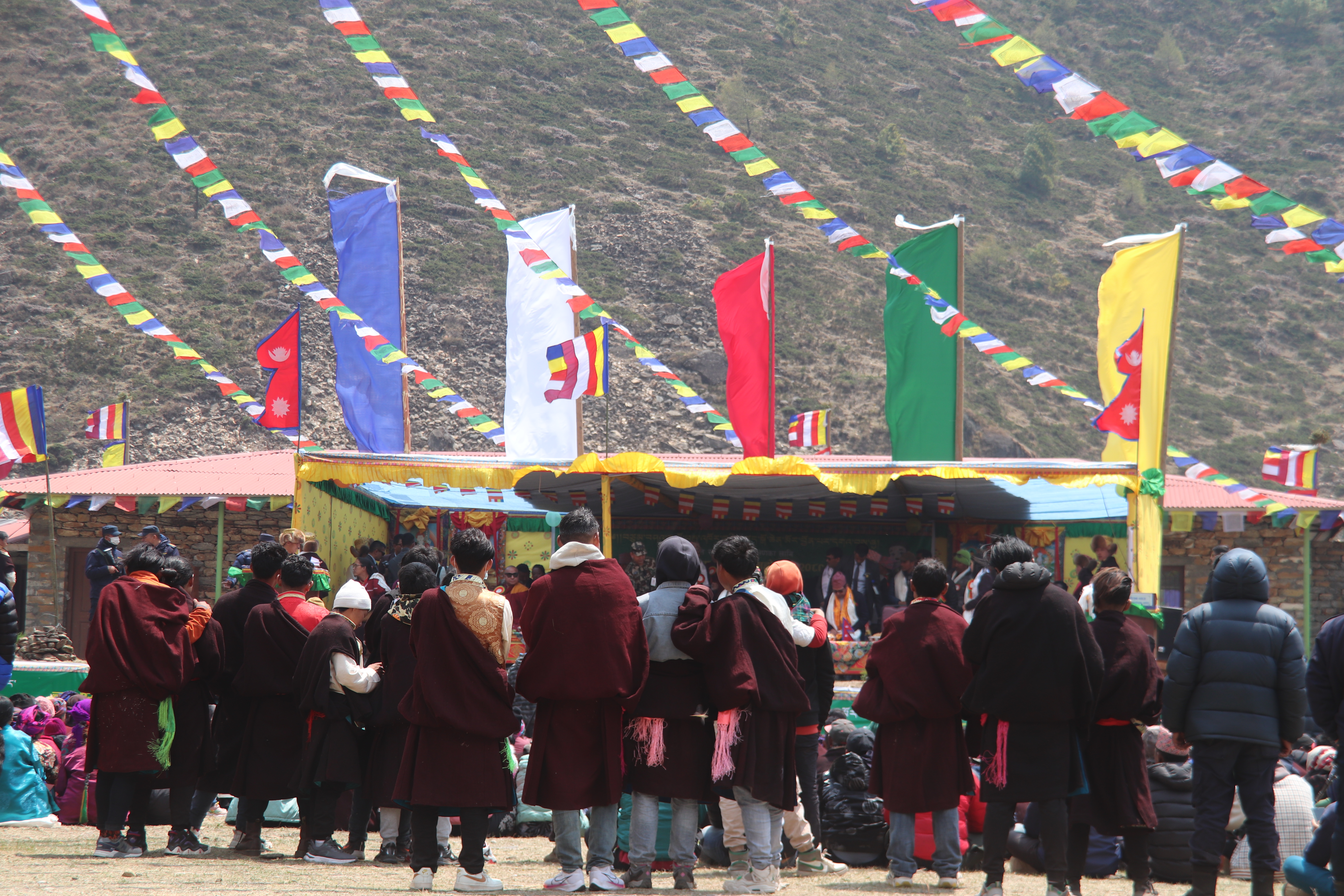
The Future of Tsum Valley: Navigating Change in a Happy Valley
In the next 50 years, the landscape of Tsum Valley is poised to undergo significant transformation. While change is inevitable, whether it heralds a positive or negative shift remains a matter of speculation. Let's delve into the factors shaping the destiny of this cherished valley and ponder over its future trajectory.
Evidence No 1: Heavy Youth Migration
A notable trend in recent years is the substantial migration of Tsum Valley's youth seeking greener pastures abroad. With limited local opportunities and complex societal structure, many young individuals, predominantly above the age of 25, are considering foreign employment for enhanced prospects and a better quality of life. The decision often hinges on whether to take a risk by staying in the village or securing a future abroad. Evidently, those who go abroad can achieve a much higher standard of living, a key motivation not just for personal gain but for the well-being of their family and future generations. Today, if a member falls ill in Tsum Valley, it can become a huge financial burden, potentially exhausting life savings and leading to significant debt.
The cost of living has risen significantly due to national inflation and the valley's remoteness. Thus, one might wonder, are the youths really happy? It seems not. Money, once a lesser part of life, has now become essential. Fifty to sixty years ago, the community had a robust barter system based on trust, with minimal use of money. Although a small portion of this barter system still exists, it has been largely overshadowed by the influence of money. As money becomes a compulsory aspect of everyday life, the compulsion to seek opportunities in cities or abroad grows.
Additionally, with most youths either in urban centers or foreign countries, local cultures and traditions are slowly eroding. It’s not that youths going abroad are completely abandoning their culture, but in new environments and situations, it is inevitably modified and adapted. We have our own dialect, which resembles Tibetan by 80-90%, yet one can easily distinguish between Tibetan and the Tsumba language. However, most youths educated in Tibetan schools now speak standard Tibetan rather than our native Tsumba. In the city, many prefer Tibetan traditional attire over Tsumba traditional clothes because of its relevance and suitability to the urban environment. Our clothes, designed for cold climates, become impractical in the city's milder conditions.
Evidence No 2: Depleted Educational Landscape
The educational landscape in Tsum Valley paints a grim picture due to the dearth of quality schools and educational resources locally. Most children are compelled to seek education outside the valley, primarily in Kathmandu or India. This necessity springs from a desperate need for quality education, which is absent in the valley. Parents inherently understand the importance of good education and want their children to have better opportunities than they did. However, the decision to send children away is fraught with emotional difficulty, leading parents to delay sending their children to schools in the city as long as possible.
The existing educational facilities, even when new buildings are constructed, cannot guarantee student enrollment, as there is are few children not enrolled in school. The situation is further complicated by the non-local teachers who face numerous challenges in existing schools, including adapting to the local culture and climatic conditions, often leading to their frequent absence. This contributes to a vicious cycle: the lack of quality education leads to parental hesitation, which results in children being sent to cities for school, which then leads to a continued lack of investment in local educational infrastructure.
Although almost 70-80% of children are now receiving an education in different parts of Nepal and India—an improvement over the past—it raises questions about the long-term effects on community cohesion and cultural continuity. This suggests a need for a shift in the narrative surrounding education, emphasizing not only academic achievement but also the importance of community knowledge and values.
Evidence No 3: Economic Hardship
The economic foundation of Tsum Valley is intricately woven through agriculture, animal husbandry, and an emerging tourism sector. Yet, this traditional economic tapestry faces mounting challenges. A declining interest in agriculture, diminishing yields of Yarsa Gumba (Caterpillar Fungus), and the severe impacts of climate change have all contributed to undermining the valley's economic stability. These challenges are exacerbated by a heavy reliance on imported goods, which introduces additional economic strain due to logistical complications.
Previously, the valley depended mainly on the neighboring Tibetan town for basic supplies. However, since the onset of COVID-19, the closure of borders has forced the residents to turn to more distant Nepali towns for essentials, significantly increasing their cost of living. Although road construction is progressing, it has not yet reached a point where it offers a practical solution to these economic hardships, leaving the residents to face extreme economic conditions.
The current situation has led to a division among the residents of Tsum Valley. One faction advocates for rapid development, willing to sacrifice traditional aspects of the valley in exchange for economic growth. Conversely, another group calls for a more cautious and sustainable approach to development, aiming to preserve the valley's cultural and environmental integrity while still improving living standards. Both perspectives hold merit, reflecting the complex balance between progress and preservation facing the community.
Evidence No 4: Climate Change
Undoubtedly, climate change has become a pervasive force, fundamentally reshaping life in Tsum Valley. The increasing frequency of natural disasters, coupled with erratic weather patterns, disrupts livelihoods and instills a profound sense of vulnerability among the residents. This confluence of climate-induced challenges and economic instability makes the prospect of migrating to more sustainable habitats increasingly attractive.
Moreover, the region faces a significant gap in environmental monitoring. The glaciers on the mountains are rapidly melting, yet there is a stark absence of data to quantify this change. Snowfall patterns have become highly inconsistent, contributing to unpredictability in water sources and agricultural planning. Additionally, there has been an increase in wildlife movements, possibly driven by changes in their natural habitats. These observations suggest that climate change is affecting Tsum Valley in multiple direct and indirect ways, yet the lack of specific data recording and comprehensive studies prevents a thorough understanding of its full impact.
The need for dedicated environmental research in Tsum Valley cannot be overstated. Without precise data and studies, crafting effective strategies to mitigate these changes and planning for the future remains a formidable challenge. Enhanced research efforts are essential to ensure the community can adapt to the shifting environmental realities and continue to thrive despite the adversities posed by climate change.
In conclusion, the conundrum facing Tsum Valley transcends simplistic attributions of blame. It is a complex interplay of socio-economic, environmental, and geopolitical factors shaping the valley's destiny. While uncertainties abound, it is imperative to adopt a nuanced understanding of the challenges and explore avenues for sustainable development. The journey ahead necessitates collective introspection and concerted efforts to safeguard the cultural heritage and ecological integrity of Tsum Valley for generations to come. Today marks a critical juncture; the time to act is now. The situation in Tsum Valley has reached a pivotal "act now or never" moment. Immediate action is essential to mitigate the impacts of tomorrow.
Address
House no: 70 / 16, Ga, Sainik Awaas Marga, Bijeswori-15
Kathmandu, Nepal



